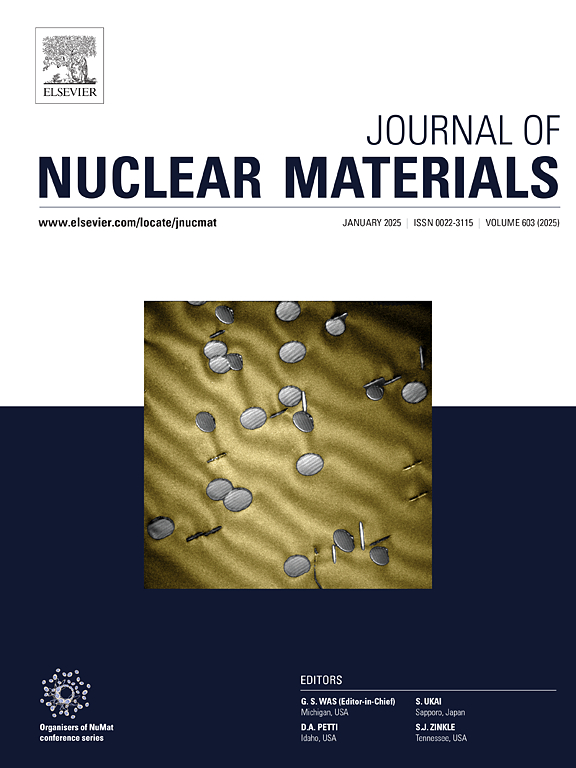Chemical characterization of uniform and localized oxides formed on Zr-2.5 (wt. %) Nb alloy
IF 2.8
2区 工程技术
Q3 MATERIALS SCIENCE, MULTIDISCIPLINARY
引用次数: 0
Abstract
Uniform and localized oxide morphologies formed on Zr-2.5(wt.%) Nb alloy in water and steam environments have been studied using electron microscopy techniques such as SEM and EPMA. The uniform oxidation was characterized by a compact and thin oxide layer. In contrast, the nodules showed localized thicker oxide growth with cracked and porous morphology. Significant segregation of Nb at the surface of the oxide nodule was observed, leading to destabilization and spallation of the oxide. The chemical states of Zr, Nb, and O in the two types of oxides were analyzed by XPS. The atomic composition of oxides in terms of O and M fractions was evaluated by p-EBS. The study revealed the oxide nodule to be richer in oxygen in comparison to the surrounding uniform oxide. The phase characteristics of these oxides were studied by Raman spectroscopy. The effect of initial surface in-homogeneities on nodule nucleation has been discussed. Polishing made the surface free of initial in-homogeneities and resulted in uniform oxidation on the surface.

求助全文
约1分钟内获得全文
求助全文
来源期刊

Journal of Nuclear Materials
工程技术-材料科学:综合
CiteScore
5.70
自引率
25.80%
发文量
601
审稿时长
63 days
期刊介绍:
The Journal of Nuclear Materials publishes high quality papers in materials research for nuclear applications, primarily fission reactors, fusion reactors, and similar environments including radiation areas of charged particle accelerators. Both original research and critical review papers covering experimental, theoretical, and computational aspects of either fundamental or applied nature are welcome.
The breadth of the field is such that a wide range of processes and properties in the field of materials science and engineering is of interest to the readership, spanning atom-scale processes, microstructures, thermodynamics, mechanical properties, physical properties, and corrosion, for example.
Topics covered by JNM
Fission reactor materials, including fuels, cladding, core structures, pressure vessels, coolant interactions with materials, moderator and control components, fission product behavior.
Materials aspects of the entire fuel cycle.
Materials aspects of the actinides and their compounds.
Performance of nuclear waste materials; materials aspects of the immobilization of wastes.
Fusion reactor materials, including first walls, blankets, insulators and magnets.
Neutron and charged particle radiation effects in materials, including defects, transmutations, microstructures, phase changes and macroscopic properties.
Interaction of plasmas, ion beams, electron beams and electromagnetic radiation with materials relevant to nuclear systems.
 求助内容:
求助内容: 应助结果提醒方式:
应助结果提醒方式:


